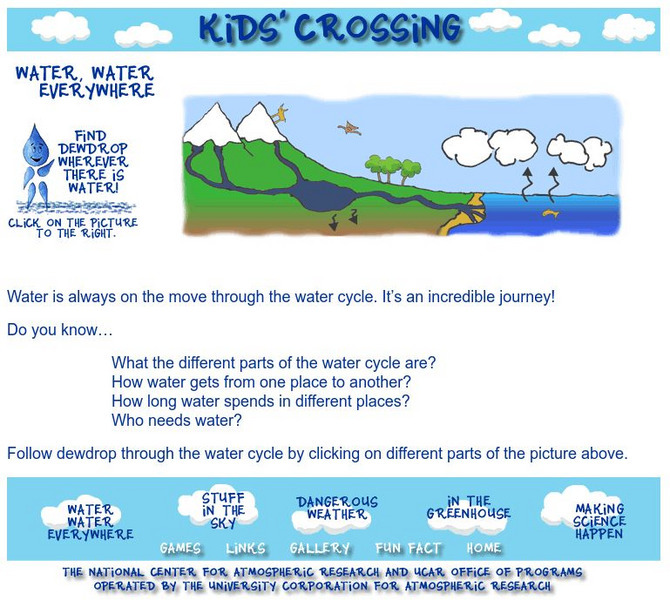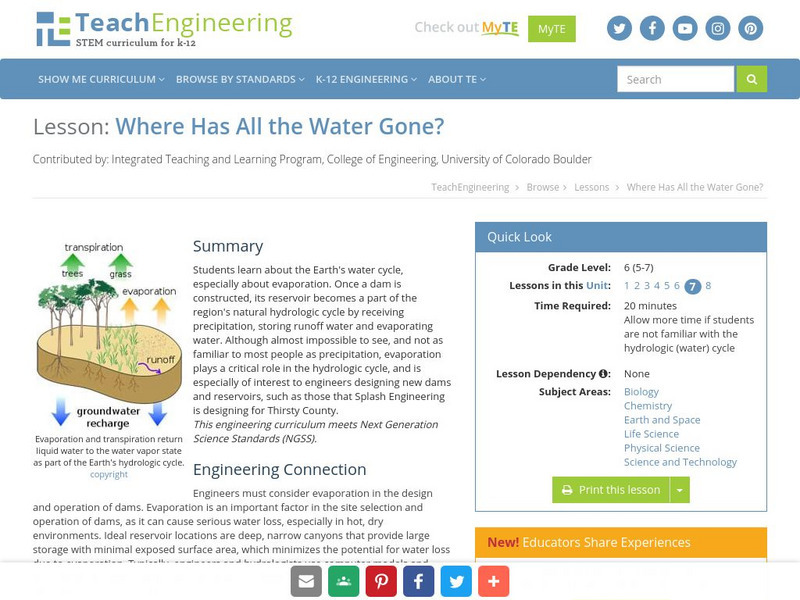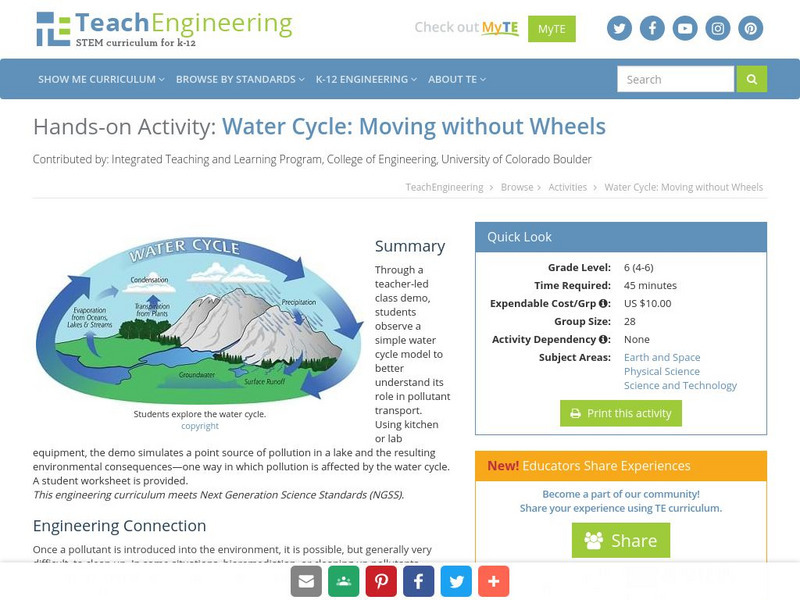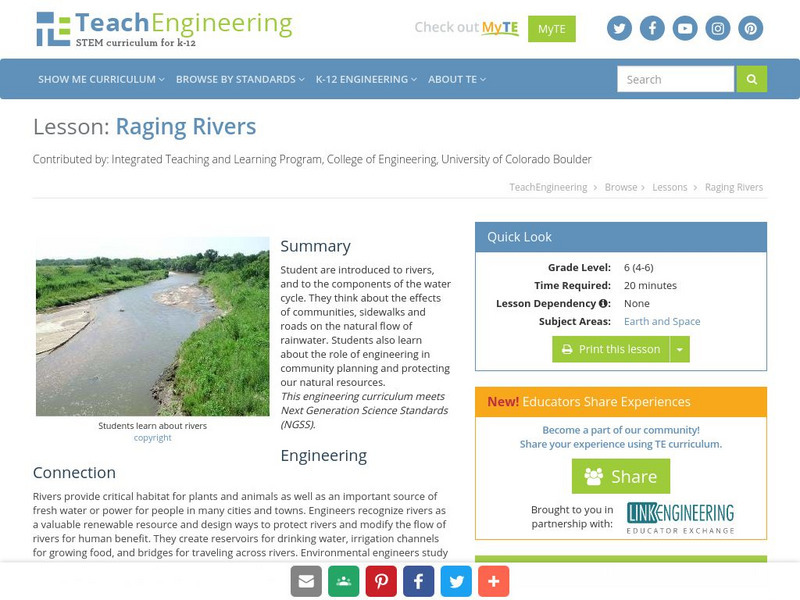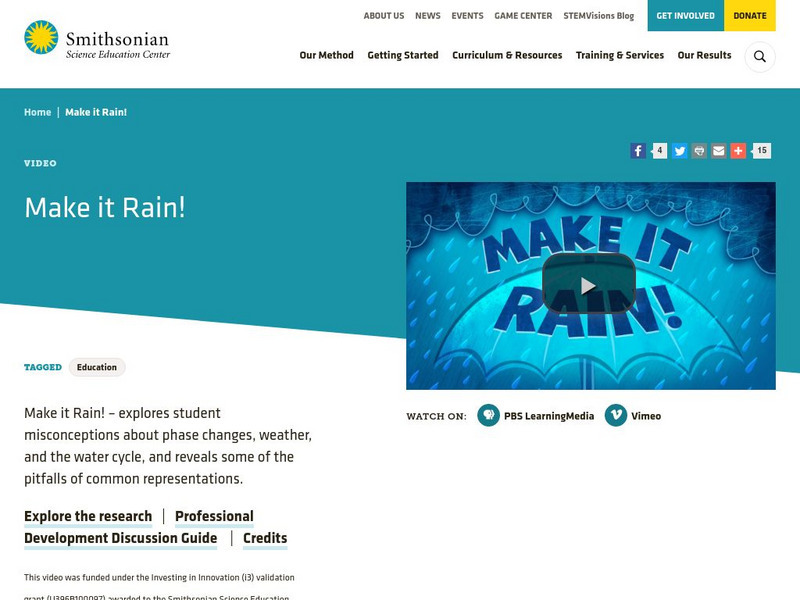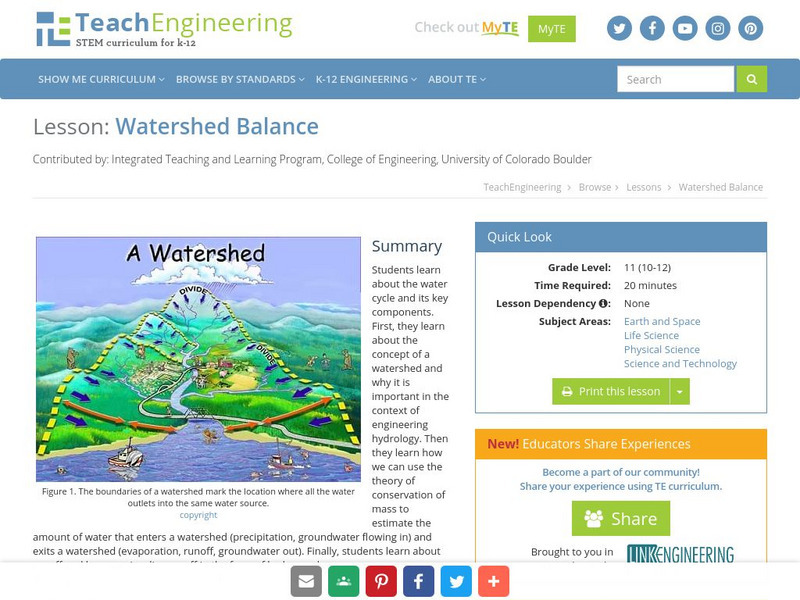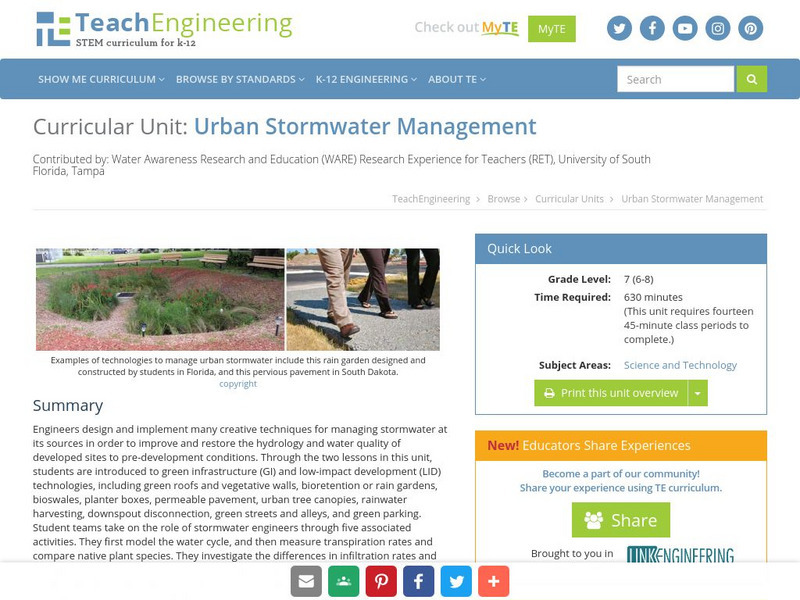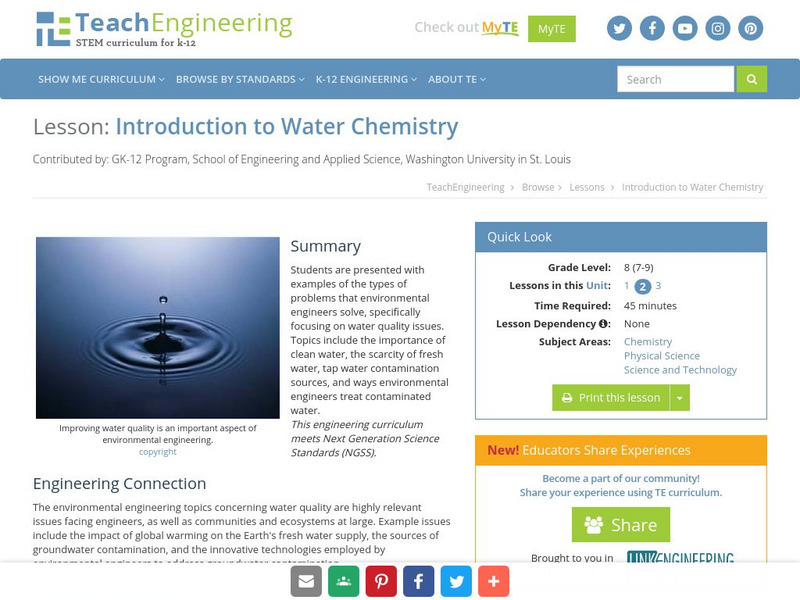Hi, what do you want to do?
PBS
Pbs Learning Media: The Sun and the Water Cycle
Learn about the water cycle through the adventures of two sisters. They will explain how the sun powers the water cycle and describe the different states of water. A glossary and labeled illustrations accompany the video. For the...
PBS
Teaching Bhutan: The Water Cycle & Bhutan
Interactive science lesson plan that teaches learners about the water cycle in relation to mountain ranges and monsoons common in Bhutan. Make a cloud in a bottle!
TeachEngineering
Teach Engineering: The Other Water Cycle
For students that have already been introduced to the water cycle, this lesson is intended as a logical follow-up. Students will learn about human impacts on the water cycle that create a pathway for pollutants beginning with urban...
TeachEngineering
Teach Engineering: Human Water Cycle
Students learn about the human water cycle, or how humans impact the water cycle by settling down in civilizations. Specifically, they learn how people obtain, use and dispose of water. Students also learn about shortages of treated,...
University Corporation for Atmospheric Research
Ucar: Water, Water Everywhere
Dewdrop teaches the water cycle through this interactive map of rivers, oceans, groundwater, the atmosphere, and glaciers.
Alabama Learning Exchange
Alex: The Water Cycle
This is an introductory lesson plan on the water cycle. The internet will be used to help teach the cycle. The student will end the lesson plan by making his/her own water cycle for observation.This lesson plan was created as a result of...
TeachEngineering
Teach Engineering: Water Desalination Plant
Students use a thermal process approach to design, build and test a small-scale desalination plant that is capable of significantly removing the salt content from a saltwater solution. Students use a saltwater circuit to test the...
TeachEngineering
Teach Engineering: Where Has All the Water Gone?
Learners learn about the Earth's water cycle, especially about evaporation. Once a dam is constructed, its reservoir becomes a part of the region's natural hydrologic cycle by receiving precipitation, storing runoff water and evaporating...
University Corporation for Atmospheric Research
Ucar: Climate & Water Teaching Box
Investigate water in a warmer world. This teaching box is filled with explorations and readings that help secondary students learn how climate change is affecting the water cycle.
TeachEngineering
Teach Engineering: Natural and Urban "Stormwater" Water Cycle Models
Students apply their understanding of the natural water cycle and the urban stormwater water cycle, as well as the processes involved in both cycles to hypothesize how the flow of water is affected by altering precipitation.
TeachEngineering
Teach Engineering: Natural and Urban Stormwater Water Cycles
Through an overview of the components of the hydrologic cycle and the important roles they play in the design of engineered systems, students' awareness of the world's limited fresh water resources is heightened. The lesson lays the...
TeachEngineering
Teach Engineering: Moving Without Wheels
In a class demonstration, students observe a simple water cycle model to better understand its role in pollutant transport. This activity shows one way in which pollution is affected by the water cycle; it simulates a point source of...
Other
Digital Library for Earth System Education: Teaching Box: Essentials of Weather
A suite of lessons focusing on the basic elements of climate and weather. Inquiry-based exploration of extreme weather events and the factors of weather including clouds, wind, air pressure, temperature, and the water cycle.
TeachEngineering
Teach Engineering: Witnessing Evaporation
The engineers at Splash Engineering (the students) have been commissioned by Thirsty County to conduct a study of evaporation and transpiration in their region. During one week, students observe and measure (by weight) the ongoing...
TeachEngineering
Teach Engineering: Water and Dams in Today's World
Students learn about the importance of dams by watching a video that presents historical and current information on dams, as well as descriptions of global water resources and the hydrologic cycle. Students also learn about different...
TeachEngineering
Teach Engineering: Raging Rivers
The lesson introduces students to the steps of the water cycle and rivers. They think about the effects of communities, sidewalks and roads on the natural flow of rainwater. Students also learn about the role of engineering in community...
Smithsonian Institution
Smithsonian Science Education Center: Make It Rain
How do you show students that the water cycle is more than just the traditional model of the ocean, clouds, and mountains and actually a part of their daily lives? This video will show multiple models of different part of the water cycle...
PBS
Pbs Learning Media: Earth's Water Movements
The paths that water can take through Earth's systems are many and complex. Examine the following diagram from NASA depicting the water cycle. Studying the water cycle is important because changes in the water cycle affect all parts of...
TeachEngineering
Teach Engineering: Watershed Balance
This lesson teaches the concept of a watershed and why it is important in the context of engineering hydrology. Students learn about runoff and how we visualize runoff in the form of hydrographs.
PBS
Pbs Learning Media: One Year in the Life of Earth
Watch the earth from one million miles away! NASA's camera captured these images showing the majority of the earth's surface is water. View a narrated or unnarrated video of these images. Background information, teaching tips, and a...
TeachEngineering
Teach Engineering: Dams
Through eight lessons, students are introduced to many facets of dams, including their basic components, the common types (all designed to resist strong forces), their primary benefits (electricity generation, water supply, flood...
TeachEngineering
Teach Engineering: Ocean Water Desalination
Students learn about the techniques engineers have developed for changing ocean water into drinking water, including thermal and membrane desalination. They begin by reviewing the components of the natural water cycle. They see how...
TeachEngineering
Teach Engineering: Urban Stormwater Management
Through the two lessons in this unit, students are introduced to green infrastructure and low-impact development technologies. Student teams take on the role of stormwater engineers through five associated activities.
TeachEngineering
Teach Engineering: Introduction to Water Chemistry
Young scholars are presented with examples of the types of problems that environmental engineers solve, specifically focusing on water quality issues. Topics include the importance of clean water, the scarcity of fresh water, tap water...









